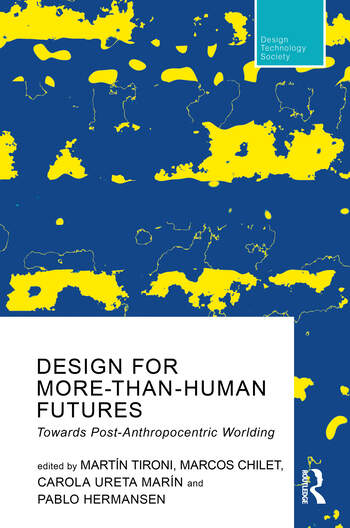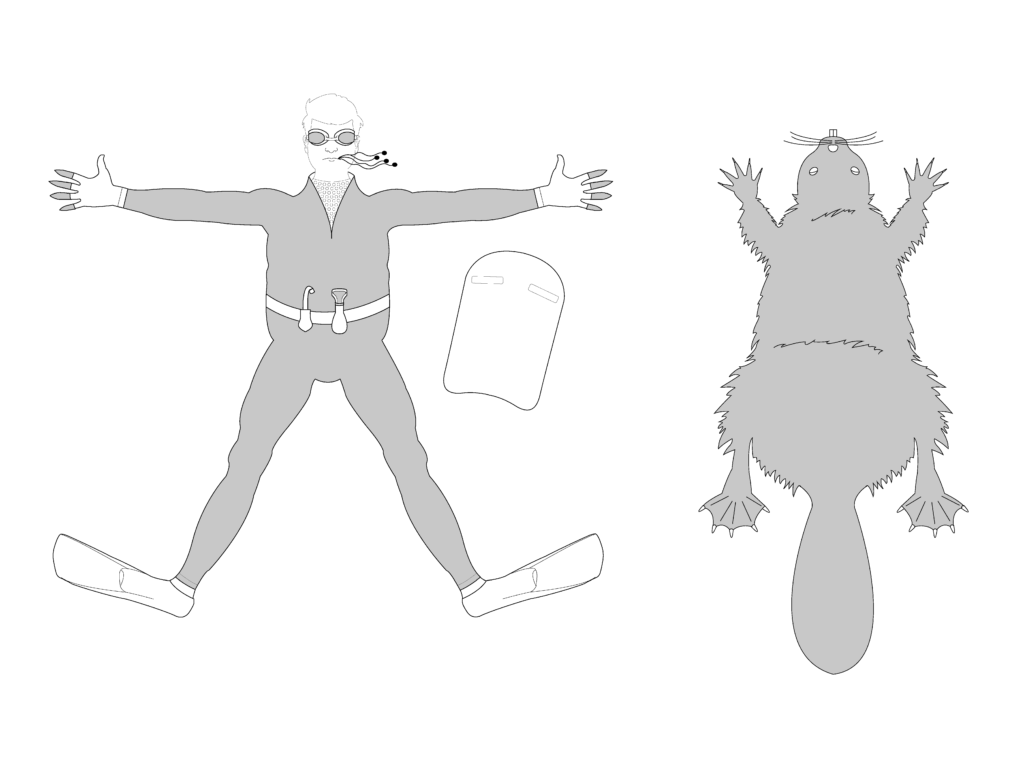Martin Tironi, Marcos Chilet, Carola Ureta and Pablo Hermansen have edited a gem of a compilation, opening a space to think about the design of worlds that are not only human.
As the editors state, the book Design For More-Than-Human Futures: Towards Post-Anthropocentric Worlding, explores a “search for a transition towards more ethical design focused on more-than-human coexistence”, being “an invitation to travel new paths for design framed by ethics of more-than-human coexistence”. For this “Questioning the notion of human-centered design is central to this discussion. It is not only a theoretical and methodological concern, but an ethical need to critically rethink the modern, colonialist, and anthropocentric inheritance that resonates in design culture. The authors in this book explore the ideas oriented to form new relations with the more-than-human and with the planet, using design as a form of political enquiry”.

It was a luxury to be able to participate with a collective proposal that is as fun as it is challenging, together with long-time collaborators and mates Ignacio Farías and Felix Remter.
Our contribution describes a pedagogic experiment – part of the Design in Crisis: Sensing like an animal design studio at the TU Munich’s MA in Architecture in 2017 – where beavers were treated as epistemic partners for rethinking architectural practice, thus engaging their capacities in attempts at designing with them.

How would animals and architects co-design if we built the right contract?
In the face of multifaceted environmental crises of anthropogenic origins, recent developments in architecture and urbanism aim to explore other materials, technologies, resources, and modes of collaboration. Yet, what if what was at stake was not the redesign of architectural forms and urban landscapes, but the very redesign of urban design and architectural practice themselves? This chapter offers a collective speculation of this, where the “more-than-human” is treated as more than the content of a design brief; demanding instead an opening to other-than-human capacities in co-design processes and to the unpredictabilities resulting from terrestrial and multispecies interdependencies. How to care, then, in architectural practice for terrestrial and multispecies entanglements? Rather than providing guidelines or general principles to do so, this chapter describes an experimental approach to relearn architecture practice from animals. Following STS and environmental humanities multispecies concerns, it describes a pedagogic experiment where urban animals were treated as epistemic partners for rethinking architectural practice, thus engaging their capacities in attempts at designing with them.
Recommended citation: Farías, I.; Criado, T.S. & Remter, F. (2023) How would animals and architects co-design if we built the right contract?. In M. Tironi, M. Chilet, C. Ureta & P. Hermansen (Eds.) Design For More-Than-Human Futures: Towards Post-Anthropocentric Worlding (pp. 92-102). Routledge | PDF